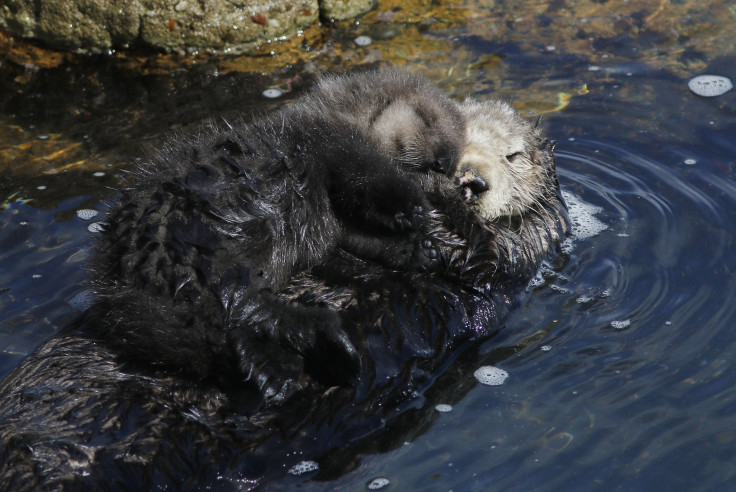World’s Smartest Animals: Sea Otters Show Intelligence Like Dolphins

Dolphins, rats, pigs, elephants, dogs and even crows have long been heralded as some of the world's most intelligent animals, but it turns out otters deserve some credit, too. Otters have shown they’re able to use tools from a young age, and that skill was likely acquired much earlier in history than dolphins’ similar skill set, according to a study published Wednesday.
Researchers analyzed the genes of more than 100 sea otters living along the California Coast. The results, published Monday in the journal Biology Letters, showed that otters’ ancestors have been using tools to accomplish tasks like breaking sea shells and gathering tools for millions of years. Otters have been seen using rocks as hammers to crack open shells in order to access the food inside. In contrast, similar tool-using skills only appeared in dolphins around 200 years ago.
Measuring animal intelligence is difficult to do quantitatively because the assessment depends on what they’re being tested on—different animals have different skill sets. But tool usage in otters makes them one of the few mammals, other than primates, who have shown the ability to do so.
“Orphaned otter pups raised in captivity exhibit rudimentary pounding behavior without training or previous experience,” the researchers wrote in the study. “And wild pups develop tool-use behavior before weaning regardless of their mother’s diet type.”

While the history of otters' intellect had not previously been thoroughly documented, researchers have long been aware of the marine mammals' intelligence and their relatively advanced methods of eating . A 2009 LiveScience article listed them among the world's smartest animals, citing their ability to "hammer abalone shells off the rocks and crack the hard shells of prey open."
Researchers have linked tool usage and the evolution of language to the evolution of humans, according to the Behavioral Ecology Research Group at the University of Oxford. That means tool usage in animals like otters have wider implications for the species as a whole. In addition to dolphins and otters, chimpanzees, octopus, elephants and certain types of crows have shown similar skill sets.
In 2013, scientists witnessed two crows in Hawaii using sticks to access tools they wouldn't have been able to reach with just their beaks. After some experimenting, researchers noted that 93 percent of captive crows were adept tool users, precisely choosing the right stick for each task.
Bearded capuchin monkeys in Brazil showed similar tactics when using a stone anvil to obtain food. Monkeys were seen placing nuts in a stable position on a stone before smashing the rock repeatedly. Octopuses have been recorded using coconut shells to construct portable homes for themselves, carrying them as they travel until they're in need of protection.
Tool usage is also well documented among elephants. In 2010, a 7-year-old Asian elephant named Kandula was seen using a plastic block to prop himself up just enough so that he could reach a piece of fruit that would have otherwise been too far out of his reach, according to Mental Floss. The one plastic block didn't do the trick, so Kandula went back and added several more blocks to make the stack higher so he could reach the fruit.
© Copyright IBTimes 2025. All rights reserved.






















